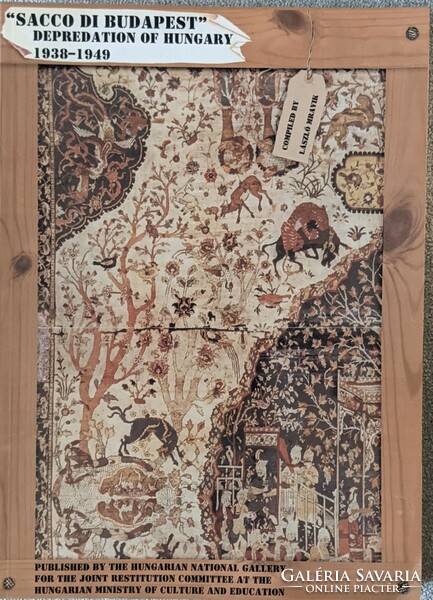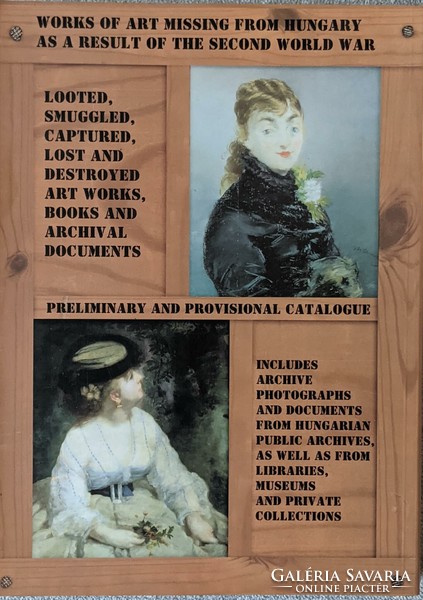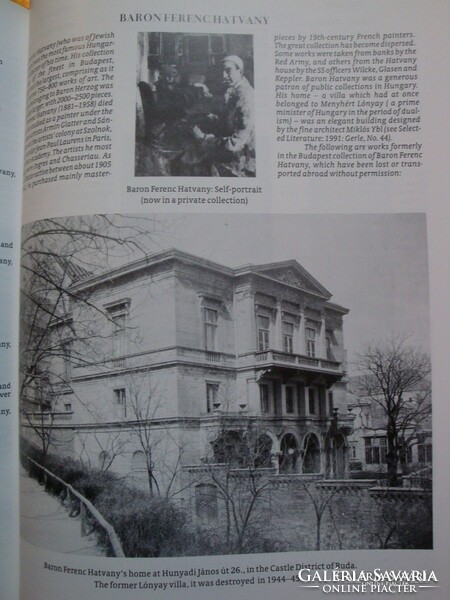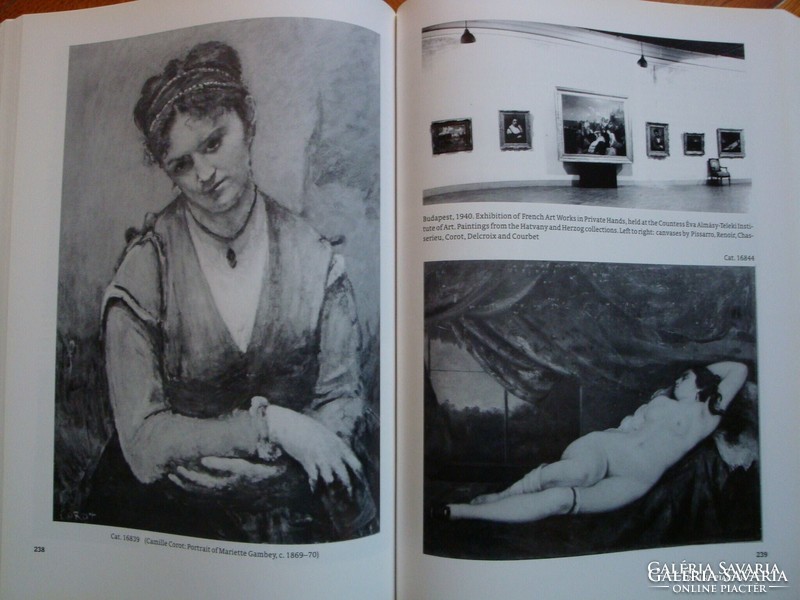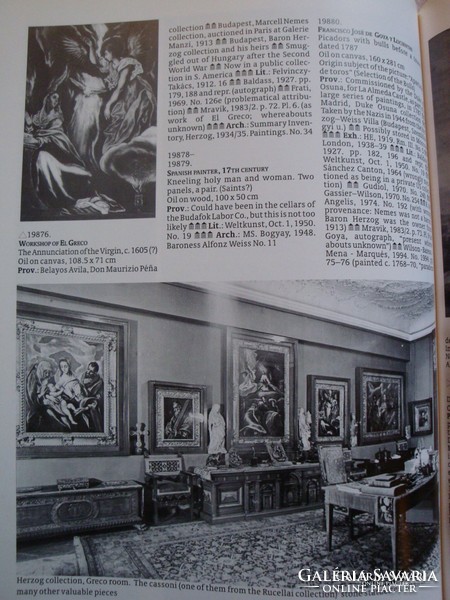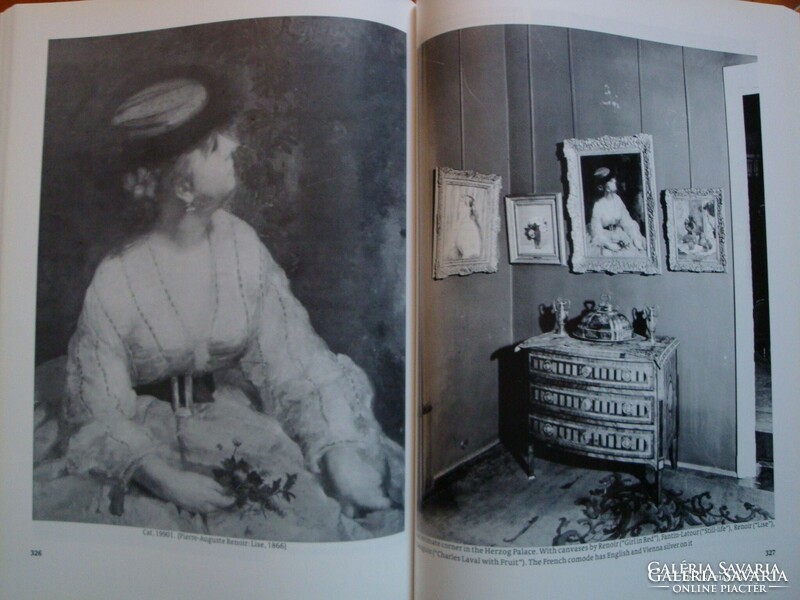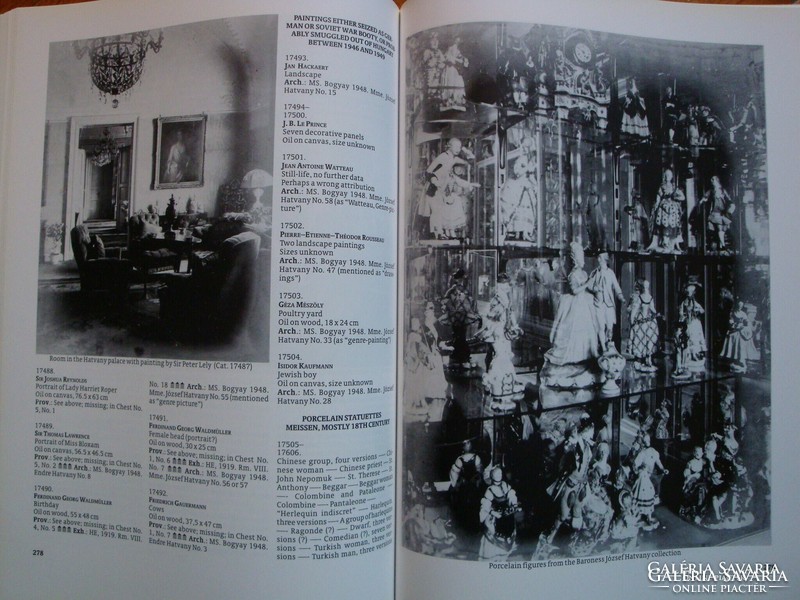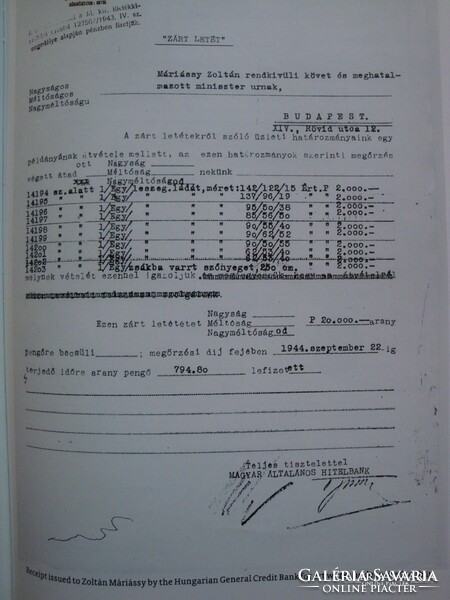A "Sacco di Budapest" és Magyarország kifosztása, 1938-1949 : a második világháború következtében
| Feltöltés ideje: 2023. augusztus 19. |
| Termékkód: 4467948 |
| Megtekintések: 360 |
| Megfigyelők: 4 |
| Ajánlatok: 0 ajánlat |
mubarat (441)
![]() BUDAPEST
BUDAPEST
Tudja meg, milyen lépésekkel tesszük biztonságosabbá és kényelmesebbé online piacterünk használatát. Részletek
| Állapot: | kiváló |
| Jellemző: | illusztrált |
Mravik László: The sacco di Budapest" and Depredation of Hungary 1938-1949"
A "Sacco di Budapest" és Magyarország kifosztása, 1938-1949 : a második világháború következtében Magyarországról eltűnt műalkotások : kifosztott, becsempészett, elfogott, elveszett és megsemmisült műalkotások, könyvek és archív dokumentumok: előzetes és ideiglenes katalógus
Egyetlen kiadás! A magyar állam és a páratlan főnemesi és magángyűjtemények (Hatvany, Herzog,
Eszterházy, Festetics és még sorolhatnám) műtárgyainak sorsát tárgyalja a szerző a második
háború és az azt követő időszakban 1949-ig.
A kötet több ezer műtárgy leírását tartalmazza, korabeli fényképanyagok felhasználásával.
a műtárgyak jelentős része megsemmisült, vagy még napjainkban is lappang . . .
Kiadói illusztrált kötés. Páratlan dokumentumgyűjtemény. Rendkívül ritka.
Magyarországról 1938 - 1949 között elveszett műkincsek katalógusa.
Benne a magyar nemesség, illetve zsidóság egykori műgyüjteményeinek elképesztő tételes listáival, a fellelhető adatok alapján. Eredeti világháborús dokumentumok, jegyzőkönyvek a műkincsek letétbe helyezéséről...stb.
Árveréseken, ha ritkán felbukkan e könyv, igen magas árat ér el. A könyvet kiadása után azonnal visszavonták, majd bezúzták.Kereskedelmi forgalomba nem került, külföldi múzeumoknak, kutatóintézeteknek juttatott belőle a minisztérium. (Múz. 34./186.) Fűzve, kiadói, illusztrált papírkötésben. 33,4 cm. Páratlan dokumentumgyűjtemény. Rendkívül ritka.
Ritka, gyűjteményes darab.
Budapest, 1998, Hungarian National Gallery (Egyetemi Nyomda, Bp.), 468
p.; ill. The Sacco di Budapest" and Depredation of Hungary. 1938-1949.
Szerkesztette: Mravik László. Szövegközti fekete-fehér fotókkal,
reprodukciókkal,...
- ON THE OCCASION OF A PREFACE-"AS YOU LIKE IT" I. THE LOSS OF THE ART WORKS This book is the prelimininary, and very much shortened, edition of a much larger, but as yet unfinished, work. At the same time it constitutes official proof that research is being pursued in Hungary into art works and cultural treasures removed from the country in tempestuous times or taken abroad in some other unlawful manner. These were parts of Hungary's intellectual and cultural heritage, and, in our view, remain so today. When choosing the title we did not wish to be overpolite, since there was no reason to do so. We did not want to offend anyone, since the facts and events which took place provide no moral basis for offence to be taken, neither by countries, nor by instituions, nor by private persons. What we are addressing here is the fact that what happened in Hungary at the time of the Second World War was nothing short of looting, or to be more exact the carrying off and the smuggling abroad of art objects. It is important to mention this because everyone by and large has been accustomed to take offence, by not accepting the simple facts, but rather by substituting them with (false) interpretations and (erroneous) ideologies.^ When on the other hand we say to the culprits that they robbed the banks, looted and despoiled Hungarian country houses, and carried off gold and j ewellery belonging to the Jews, they are, of course, not pleased, and we do not expect them to be. We have, however, weighed these words and can use no others if we are to be true to history. After more than half a century, our hope is that as countries and institutions, if not as private individuals, we can begin to process the idea that we are the heirs to certain crimes. And if I may continue, the main offender was-let us finally say it-the Soviet Union, and its lawful successor. Yet even before the military authorities of the USSR carried of an appreciable proportion of Hungary's art treasures, very many others had already mutilated the country's cultural heritage. The story really begins with the legal measures depriving the country's Jews of their rights, measures which, from 1938 onwards, affected first their movable and non-movable property, later their freedom of movement, and finally, when they had nothing, their lives.2 After the German occupation of Hungary in the spring of1944 and the rise to power of the Hungarian fascists as a direct result of this, pillaging became general. This was even the case when thefts were taking place in a less overt way. Art treasures owned by Jews were sequestrated and collected together centrally, but every piece was handled in the knowledge of who its owner was.3 The situation became chaotic only when it became clear that Soviet troops would shortly encircle the Hungarian capital. In late November and early December 1944 the Szalasi government, which had come to power in what can only be described as a coup, began to evacuate the most important art works and books in Hungarian public collections to the territory of the Third Reich. Together with these it took the greater part of the art works owned by Jews, other valuables and objects associated with Hungarian statehood, namely the Hungarian coronation insignia and the precious metal and precious gem reserves of the National Bank of Hungary. The German military used its occupation of Hungary not only to augment Germany's strategic reserves, but also to increase its own wealth, by whatever means. In almost all cases, the gold, silver and platinum items of Hungarian Jews living outside Budapest passed into the hands of the German officers entrusted with the implementation of the Final Solution.4 It was common knowledge that shortly after the German occupation the Jews outside the capital had been almost totally liquidated. The clumsy steps taken by the Hungarian authorities to prevent this were almost totally ineffective. Indeed, the Hungarian gendarmerie liberally assisted the Germans in the deportations and in the plundering. However, there were no important art works among the objects stolen by the Germans at this time, since there were few art collectors of any note among the Jews of the small towns and villages. Shortly afterwards legal measures were introduced enabling the Hungarian state to sequester works belonging to Jews, and Hungarian officials j ealously monitored all German actions which would have violated these laws.5 This attitude was dictated by pure logic, because the war was already surely lost, because they would in all probability be called to account when the hostilities were over, and also because most Hungarian officials were anti-German in sentiment.6 Many thought-not without reason-that by sequestering Jewish property they could save it for its owners. For their part, Ferenc Szalasi and his entourage took the view that they were stealing from their own Jews, and did not want to share the loot with the Germans. But among the leading Hungarian Nazis close to Szalasi there were many (Endre Baky, for example) who helped the Germans in their quest for art treasures.7 During the German withdrawal and the socalled Winterhilfe operation which preceded it, Nazi officers carried off an enormous number of art treasures from Jewishowned villas. These were collected together in Buda and then taken, in convoys of lorries or by rail, to Austria. By this time no-one asked the opinion of the Hungarian authorities. Those art works which they were unable to evacuate the Germans set alight along with the Mauthner villa in Buda, displaying an example of barbarism not seen in Hungary in more than 400 years.
Postázás csak előre utalás után értékbiztosítva !
Garanciális feltételek
| Garancia: 1 év |
Fizetési opciók
| Banki előre utalás |
| Készpénz |
Szállítási opciók
|
Szállítás innen: Magyarország Feldolgozási idő: 1 munkanap |
|
| Személyes átvétel | Budapest |
| Postázás | 3000 HUF |
